OCT marker for liver mitochondrial diseases
Ornithine carbamoyltransferase (OCT) is an enzyme involved in the urea cycle and localized in the mammalian liver mitochondria. The 80127 rat/mouse OCT assay kit that allows the highly sensitive quantitation of OCT can be used to detect liver diseases with cultured cells and model animals.
This page introduces some data on OCT. Neither reprint nor distribution is allowed without permission. If you have any questions, please contact the Marketing & MR Section of YAMASA Corporation. Some data are also listed on the product leaflet. Please download them as needed.
Hepatotoxic drugs, such as amiodarone, amlodipine, celecoxib, imipramine, tamoxifen, troglitazone, and fluoxetine, added to the culture medium of the primary culture of rat liver cells, increased OCT in the culture medium at low doses, compared with alanine aminotransferase 1). Therefore, OCT is a useful indicator of drug hepatotoxicity using cultured cells.

Serum OCT levels are high in nonalcoholic steatohepatitis (NASH) and alcoholic liver disease (ALD) model rats 2). Therefore, OCT is a useful indicator of liver diseases in model animals.
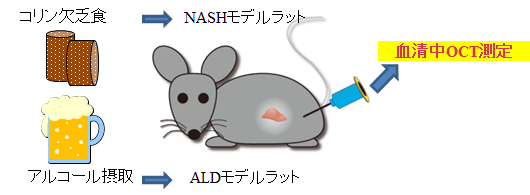
Serum liver disease markers were compared between SD rats receiving choline-deficient (CD) and control diets (Figure 1). SD rats are unlikely to suffer from liver diseases due to a CD diet. However, OCT levels in the CD diet rats were significantly higher than those of the control diet rats after four weeks of ingestion (p<0.05). In addition, pathological examination of the livers after four weeks of CD diet ingestion revealed mild fibrosis (Figure 2). Thus, OCT was demonstrated to be a useful marker in the NASH model rats.
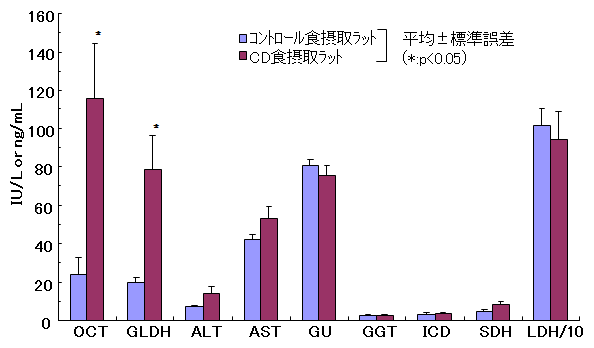 Figure 1. Serum liver disease marker levels in NASH model rats
Figure 1. Serum liver disease marker levels in NASH model rats
OCT, ornithine carbamyltransferase; GLDH, glutamate dehydrogenase;ALT, alanine aminotransferase;
AST, aspartate aminotransferase; GU, guanase;GGT, gamma glutamyltranspeptidase;
ICD, isocitrate dehydrogenase; SDH, sorbitol dehydrogenase; LDH, lactate dehydrogenase.
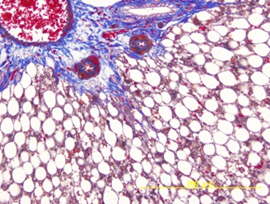
Figure 2. Pathological examination after four weeks of CD diet ingestion
(Source: The 36th Annual Meeting of the Japanese Society of Clinical Toxicology (partially revised))
Wistar rats were fed ethanol (5-30% in drinking water) and/or a high-fat diet (HFD) for 15 weeks to measure serum liver disease marker levels. Serum OCT levels significantly increased in the ethanol and HFD + ethanol groups as compared with the control group (Figure 3). Pathological examination of the ethanol-ingesting rats revealed hepatocyte eosinophilia and vacuolization mainly in the centrilobular regions and hepatocyte degeneration and mononuclear cell infiltration around the central vein (Figure 4). Thus, OCT was demonstrated to be a useful marker in the ALD model rats.
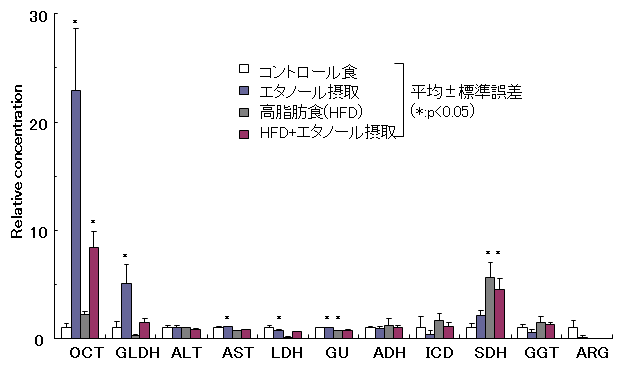 Figure 3. Serum liver disease marker in the ALD model rats
Figure 3. Serum liver disease marker in the ALD model rats
OCT, ornithine carbamyltransferase; GLDH, glutamate dehydrogenase; ALT, alanine aminotransferase;
AST, aspartate aminotransferase; LDH, lactate dehydrogenase; GU, guanase; ADH, alcohol dehydrogenase;
ICD, isocitrate dehydrogenase; SDH, sorbitol dehydrogenase; GGT, gamma glutamyltranspeptidase; ARG, arginase.
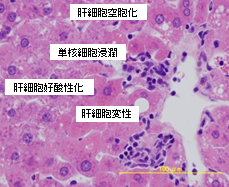
Figure 4. Pathological examination of ethanol-ingesting rats
1.Furihata T et al. (2016). Drug Metab Pharmacokinet. 31. 102-105.
2.Hiroshi Murayama, et al.: The 36th Annual Meeting of the Japanese Society of Clinical Toxicology
